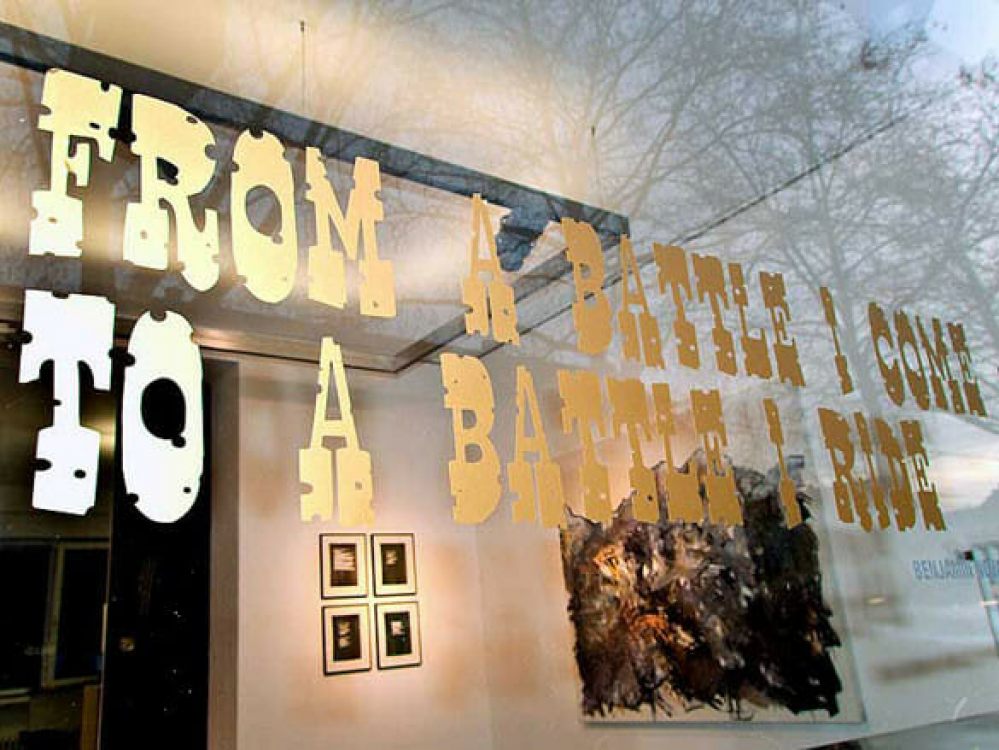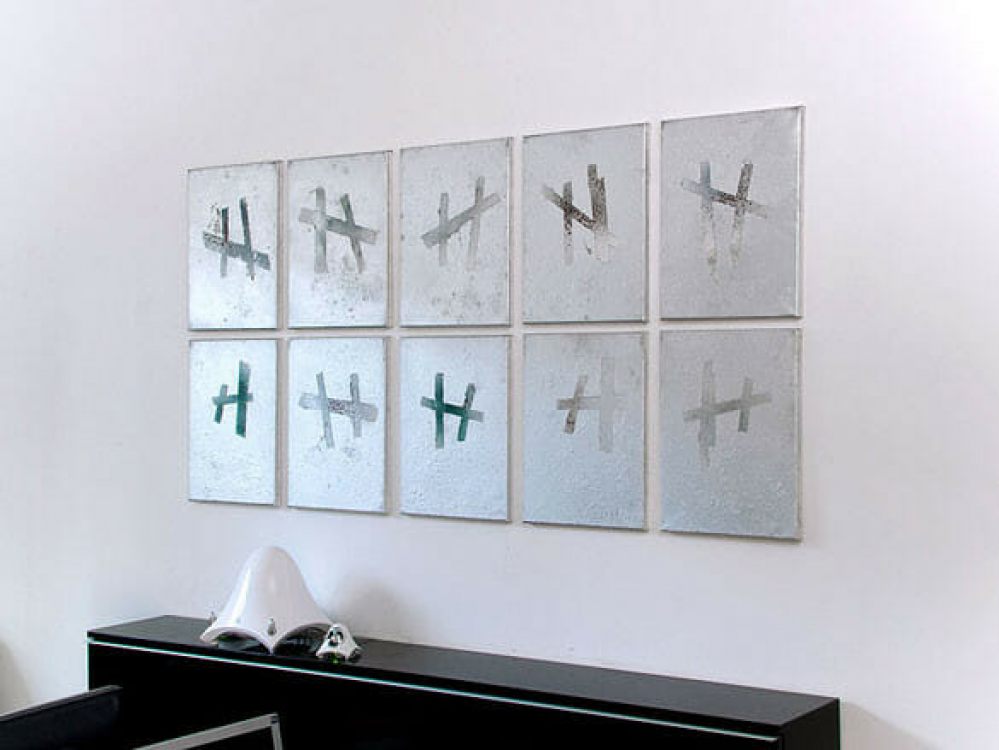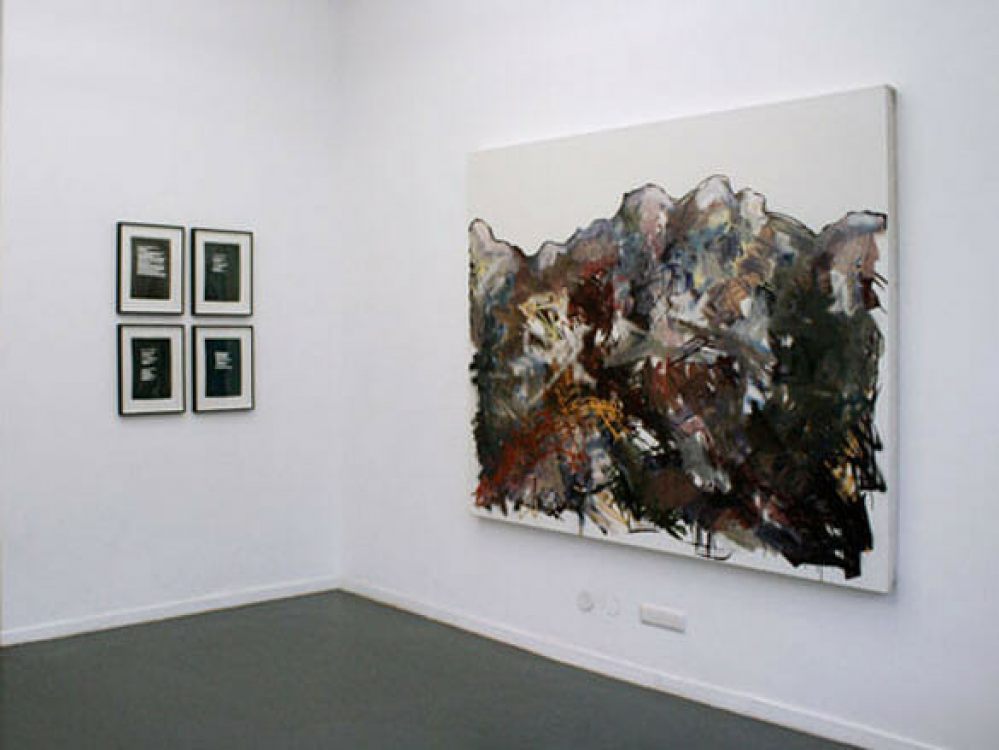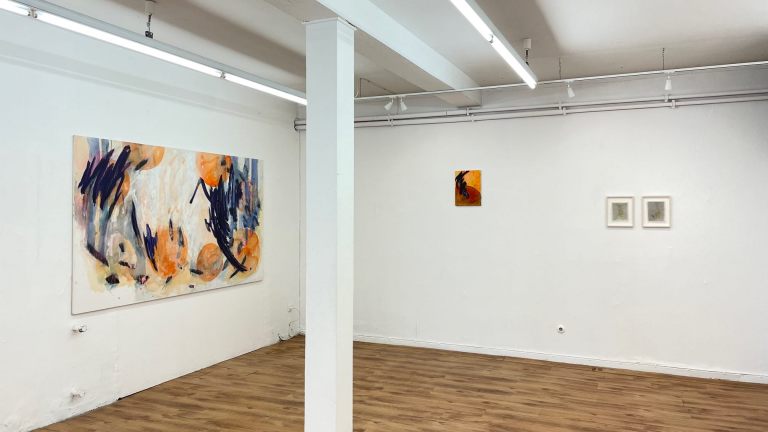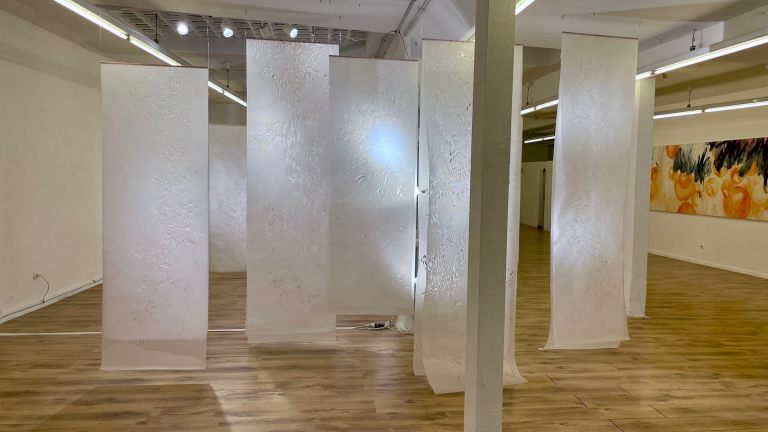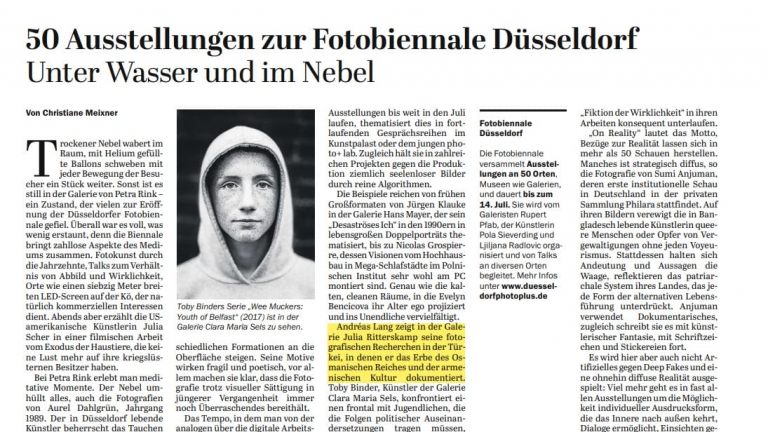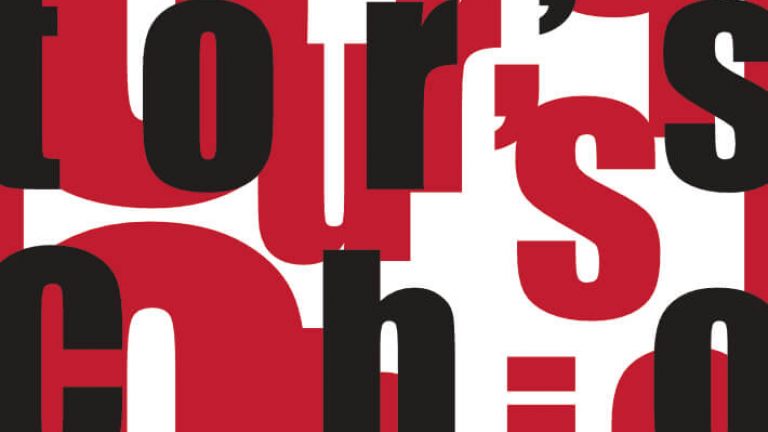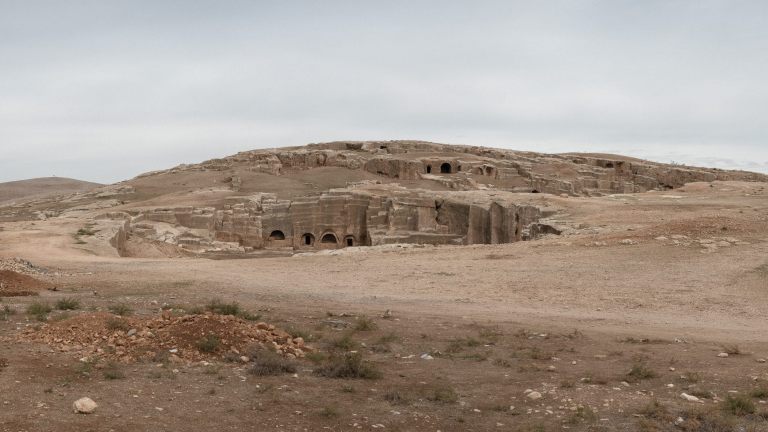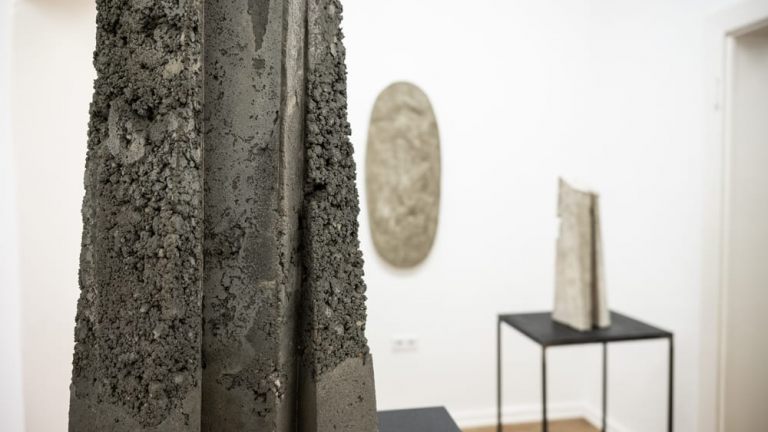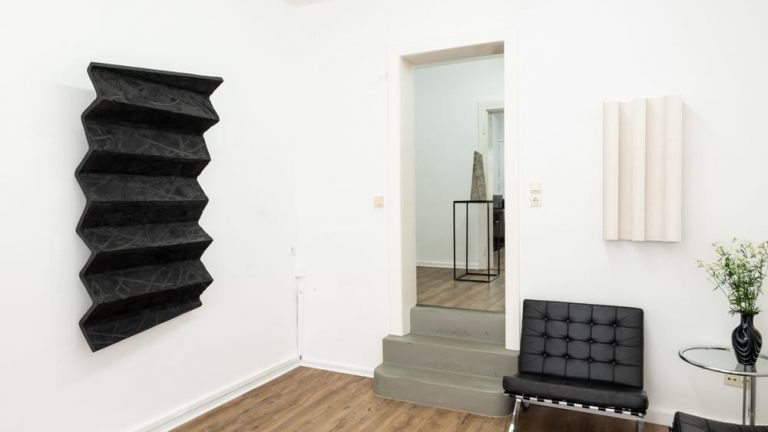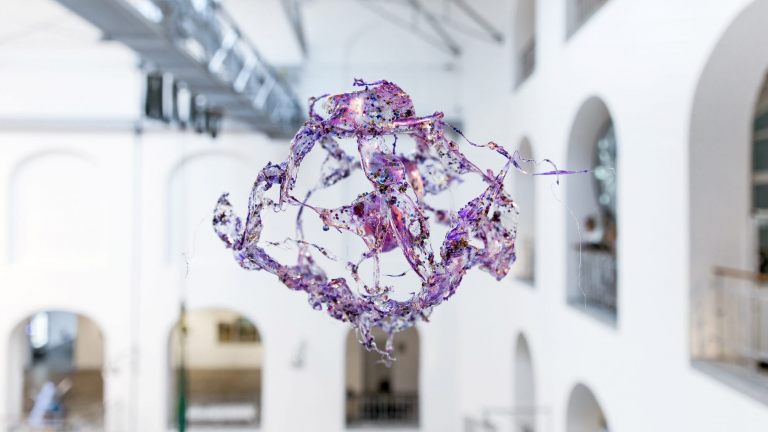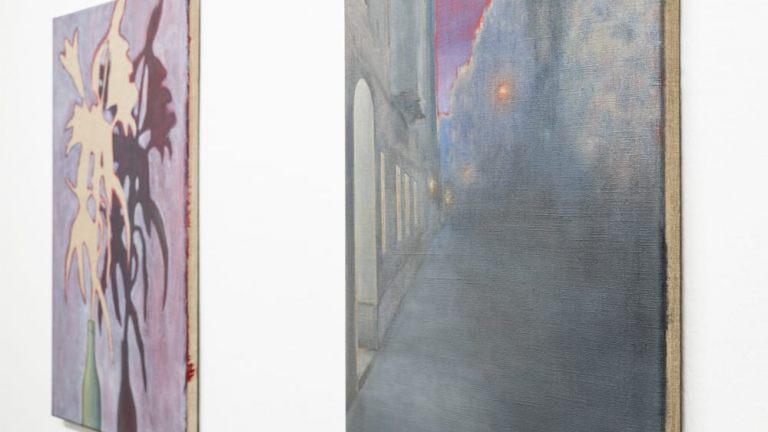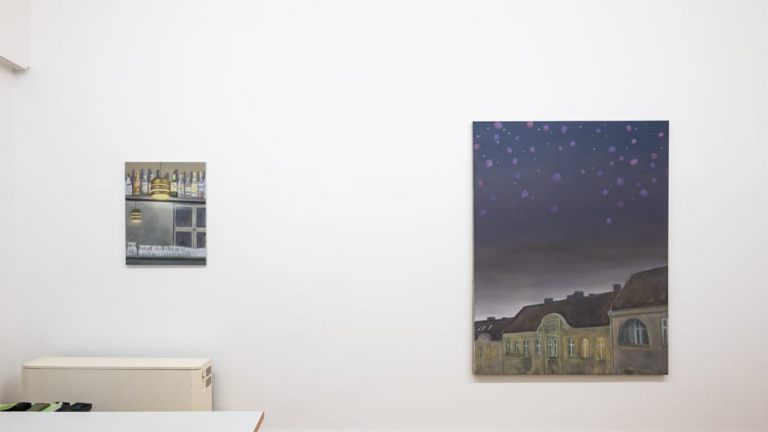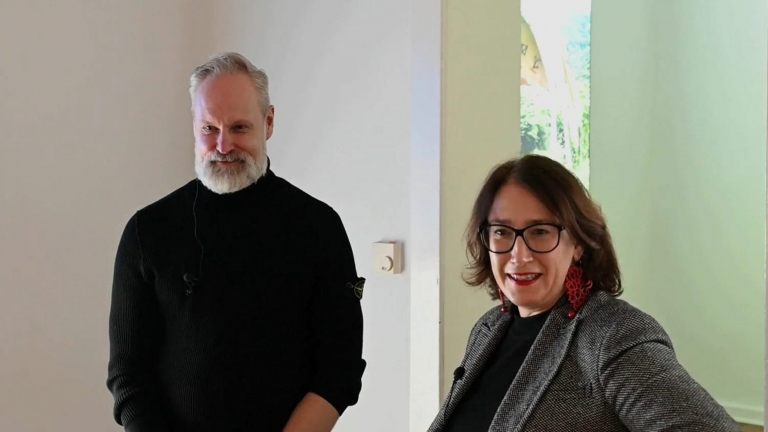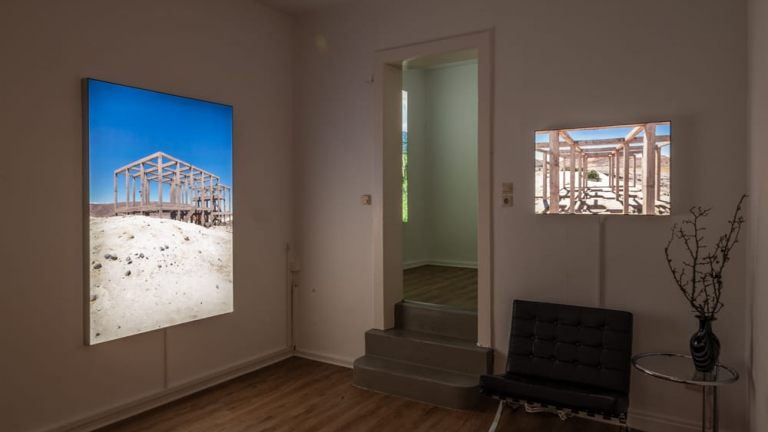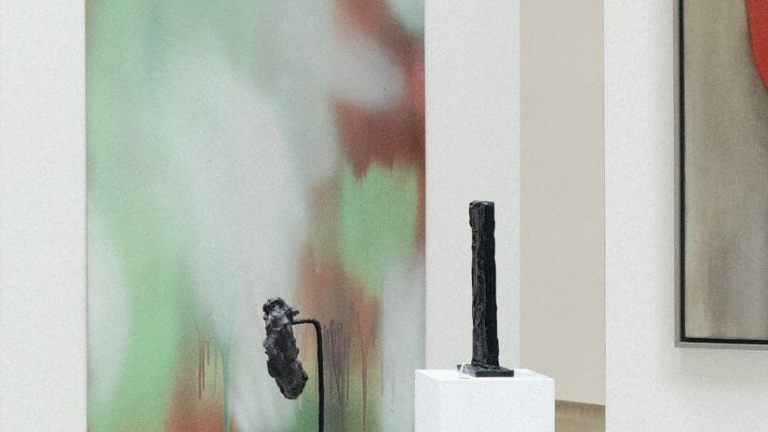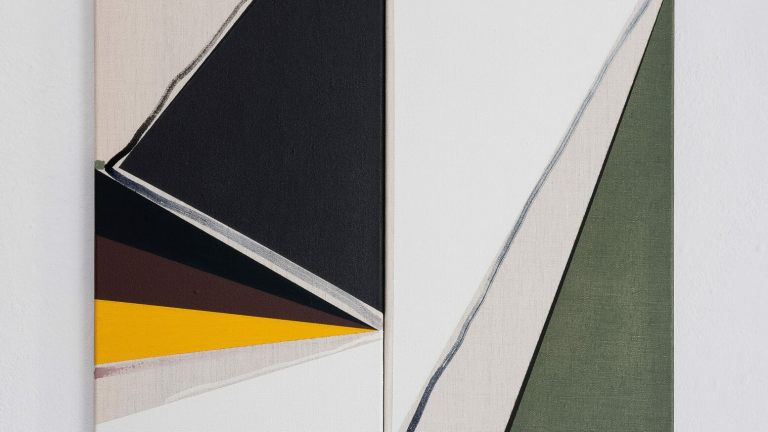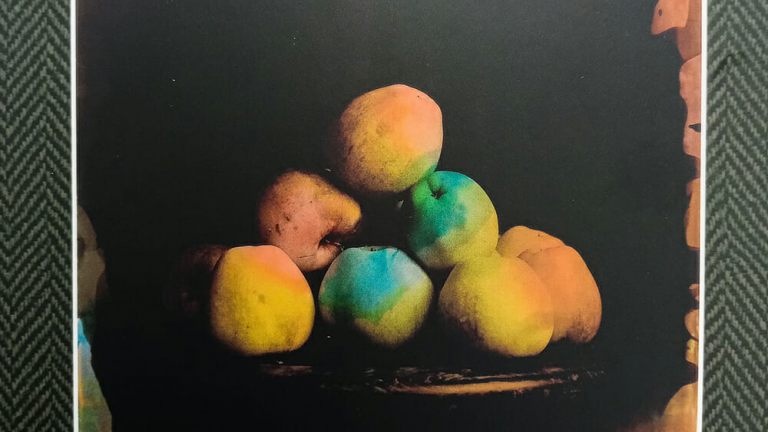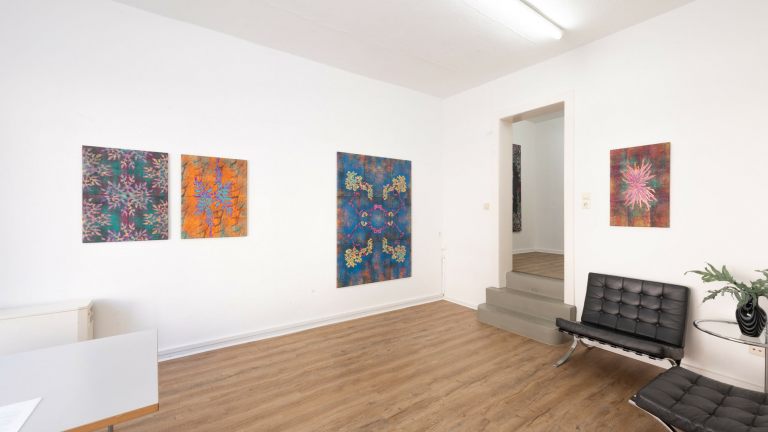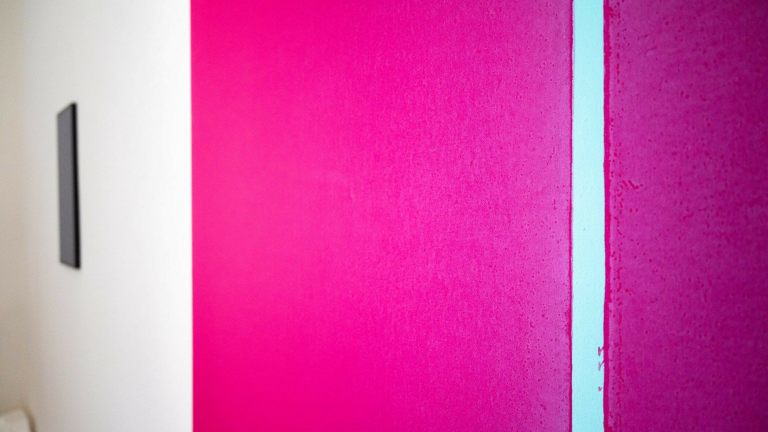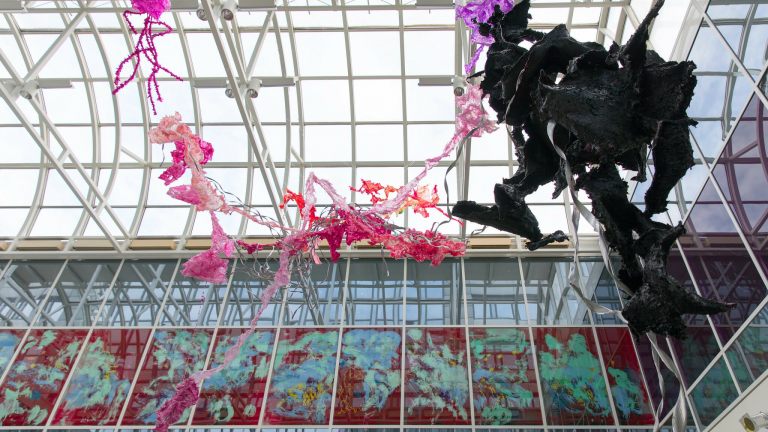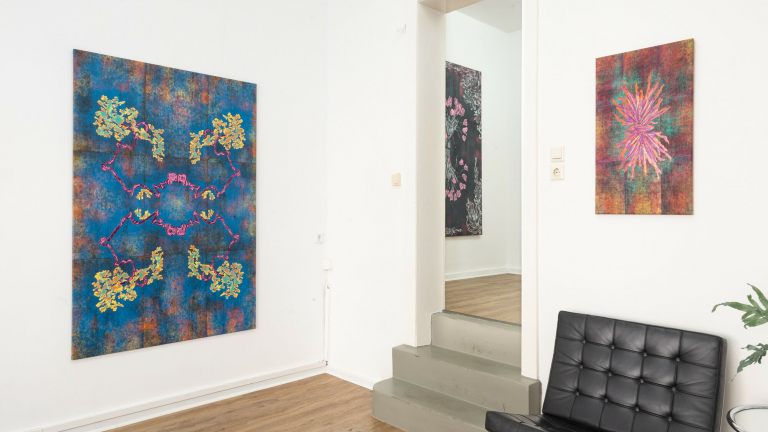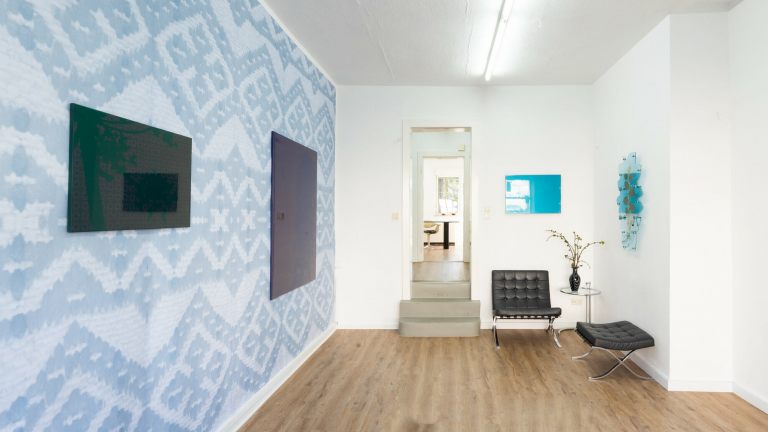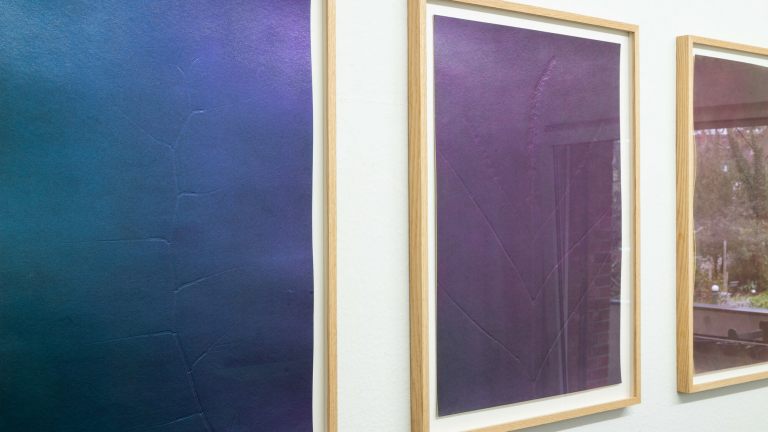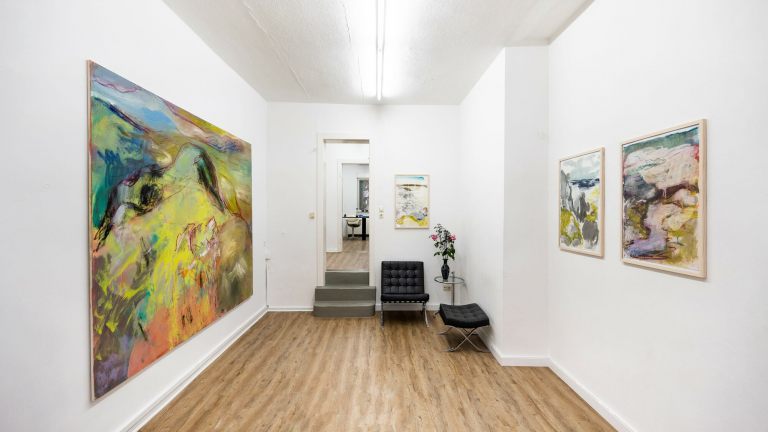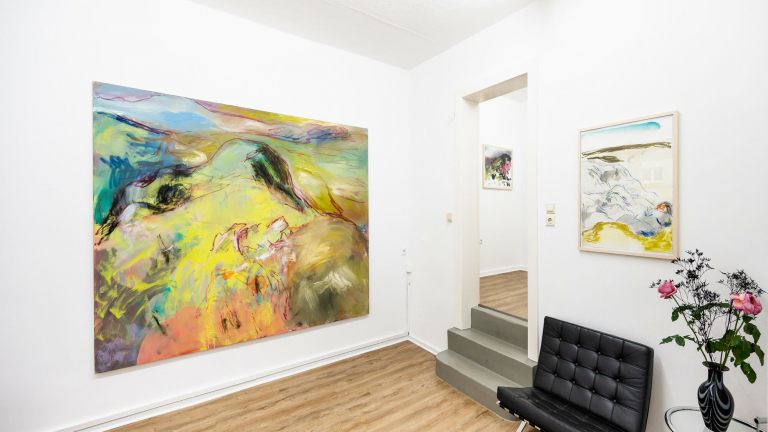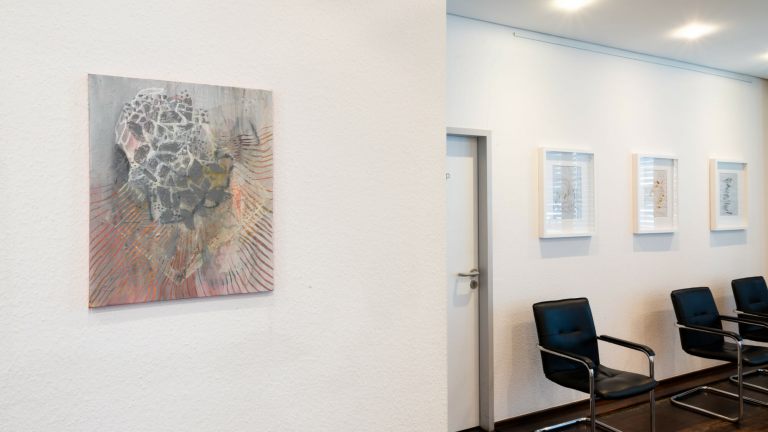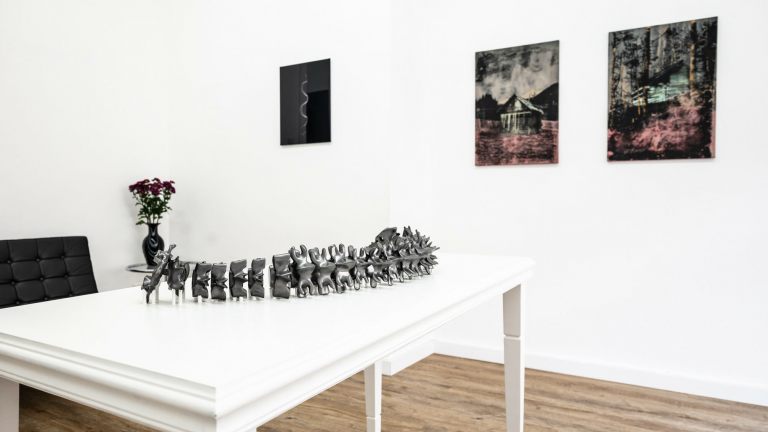From a battle I come – To a battle I ride : Benjamin Novalis Hofmann
31.10.2009 bis 10.12.2009 / Haufekonzept / Luxemburgerstraße 263 • Köln
Vernissage 30.10.2009, 19:30-21:30 Uhr
Landscape painting. At first, this might sound conservative in terms of medium and subject. But why has the fascination with painted views of nature remained uninterrupted within an arts scene that since the time of Marcel Duchamp has frequently expressed itself in material combinations beyond the classical tableau? Which, analogous to the increasingly virtual existence of the 21st century, has access to entirely new media?
Landscape is inseparably connected to the human being and its inner experience, as, among others, Chauteaubriand determined at the end of the 18th century in his letters on draughtsmanship. In the 19th century, landscape painting became more important after having been previously considered an inferior genre within the canon. The Romanticism movement applied nature as a reflection of human sensibility. Following the abolition of firm rules, genres and stylistic concepts, landscape functions today as a screen upon which artists can explore and communicate conditions and place these at the disposal of the viewer.
Landscapes also take on an important position in the artworks of Benjamin-Novalis Hofmann, alongside groups of historic and art-historic themes as well as iconoclastic comments about socially relevant symbols.
As is the case here, Hofmann almost always works in serial bodies of works.
“Chiemgau” contains altogether 10 canvases (5 colour and 5 black-and-white works), which represent counterparts for one another.
The outlines of mountain chains are taken over from sketches that the artist created while hiking in 2008 and transferred onto large-format canvases. That is, however, the only aspect that might be deemed naturalistic: the background is not completed. Foreground, mid-ground and background remain partially unclear. The painted image does not end at the edge of the canvas. In this way, the artist plays with traditional viewing patterns and forces the viewer to let his or her eyes travel instead of anchoring them in a comfortable spot.
Graphical elements complement the painted composition, which is positioned between figuration and abstraction and in which artists and art forms are stylistically cited, for example graffiti tags or Paul Cézanne.
In comfortable opposition to a currently prominent trend in contemporary art, the works aren’t exaggeratedly blown-up drawings but instead real paintings. Benjamin-Novalis Hofmann explores the efficacy and enduringness of experimental painting techniques and artistically alien materials such as bitumen and devices from the sprayer scene. The evoked optical disturbance is rather deliberately applied.
While other techniques allow for corrections, the wide bitumen marker with which the black-and-white landscapes were painted demands one hundred percent perfection. Mistakes can’t be corrected afterwards. Japanese calligraphy imposes itself as a comparison: the artist must calculate and study drawing and movement in advance since the execution then necessarily occurs in one swing.
The often almost furious characteristic style of the coloured parts is halted at the outlines. It is an oscillation between control and loss of control. A suspense thus emerges that, for Hofmann, never ends in chaos.
The colourfulness of these works, painted using mixed technique, is not that of a bright summer day, but tends in the direction of autumn. If one wishes to go very deep into interpretation, one can notice vanitas aspects.
The area of the sky that, according to many religions, encompasses “the transcendental” remains empty and thereby indefinite. This, too, could be worthy of an interpretation.
